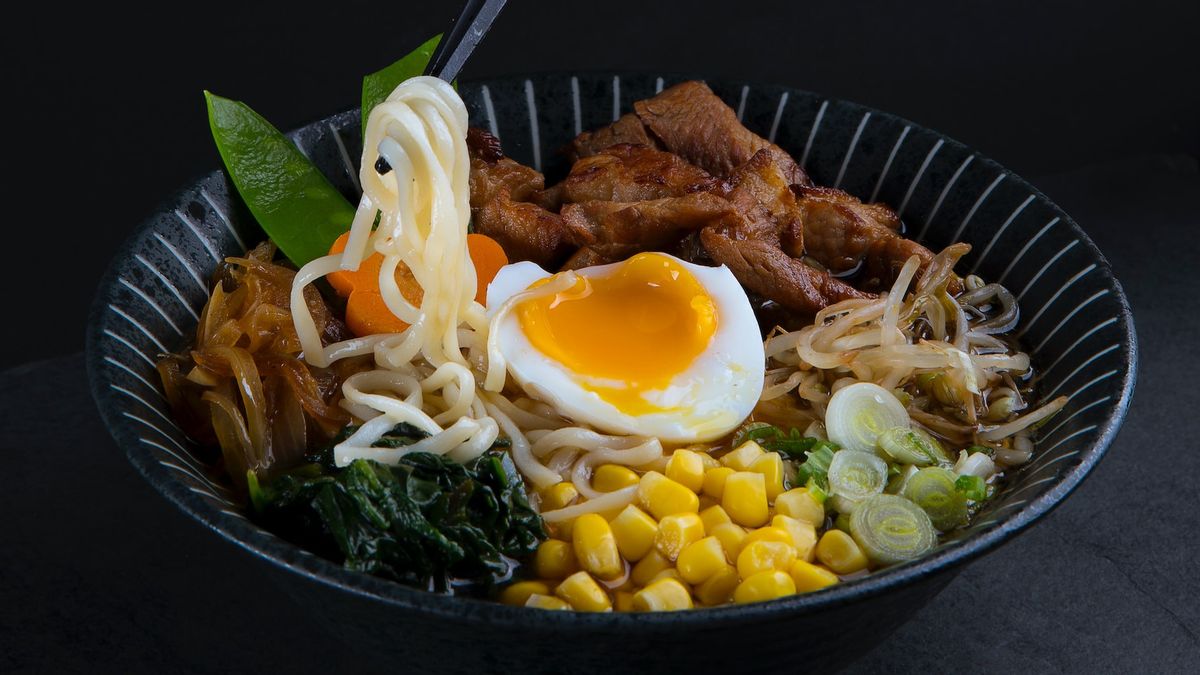
JAKARTA - Sushi, Udon, Ramen, Yakitori are some of the many legendary Japanese cuisine / culinary delights. You must have tasted one of them, right?
A distinctive feature of Japanese cuisine is the use of fresh and quality food ingredients. No wonder, Japanese diets or diets are increasingly popular, no less popular with Mediterranean diets or diets. These two diets are considered the best diet for health.
One of the characteristics that makes Japanese cuisine different and unique is the presence of the umami taste, which gives a sensation of deep taste and pleasure. This taste is different from the other four flavors such as sweet, sour, salty and bitter.
Umami is often associated with the use of monosodium glutamate (MSG). However, many people do not know that glutamic acid is first obtained from kombu seaweed. The next umami sensation that complements the taste profile of ferries comes from the discovery of monophosphate inosine (IMP) and monophosphate guanosine (GMP) - both peptides derived from deep sea fish and seaweed. In addition to adding and complementing flavors, this natural compound is also beneficial for health.
One type of non-essential amino acid that is needed by the body is glutamate and glutamin. Glutamat is widely found in foods such as miso, soybeans, and seaweed, while glutamin can be obtained from coconut, meat and dairy products. These two amino acids have many health benefits, including helping to maintain the immune system and increase the body's resistance to disease.
Endang S. Sunaryo as Gizi and Food Observer said that glutamic acid is a compound that is naturally found in various food ingredients such as tomatoes, parmesan cheese, fungi, and kombu. In addition, MSG can also be a choice of a source of glutamic acid which has benefits in enriching food taste and reducing the amount of NaCl kitchen salt usage by 30 percent, both for hypertension sufferers who have to reduce NaCl consumption.
"By adding glutamic acid from natural ingredients or using MSG wisely, of course it can help increase the enjoyment of dishes naturally," explained Endang S. Sunaryo.
An important ingredient in Japanese dishes is flavored sauce made from dashi, namely fish broth mixed with kombu (soft seaweed) and katsuobushi (dry tuna). These materials are rich in peptides that are beneficial for the body, especially in fighting viral infections and increasing awareness of immune cells, especially T cells. In addition to being rich in complex ferries that are characteristic of Japanese cuisine, the taste of umami can also increase fullness and reduce salt intake. Thus it is beneficial for people with degenerate diseases, especially hypertension.
Japanese ingredients that use a lot of marine products such as fish, crudesea, seaweed and are balanced with vegetables and spices typical of miso fermented and nato in addition to being nutritious also enrich the world's culinary kinds. Thus, enjoying Japanese cuisine not only pleases the tongue, but also provides various health benefits.
Meanwhile, in Indonesian traditions, eating delicious dishes has a philosophical meaning rich in taste due to the presence of various spices and herbs.
Spices and herbs not only satisfy taste because they add delicious foods, but are also special because they have many phytochemical nutritional ingredients in them such as antioxidants, oleoresins, atsiri oils, vitamins and minerals that have proven beneficial to health.
Both are also anti-inflammatory, antiseptic or anti-bial, effective in improving the immune system, especially against viruses and bacteria by activating Natural Killer (Nk), Macrophag, and Netrophill.
관련 항목:
One of Indonesia's culinary wealth is the use of ingredients rich in Glutamatic acid, as found naturally in nuts, coconuts, milk, meat, fish and marine products, eggs, vegetables and fruit. This balanced nutritional support raw material will be more delicious with the presence of mixtures of MSG, IMP and GMP which enrich each other's flavors.
This is a characteristic of Indonesian culinary which is different from other countries. A mixture of kitchen salt with kitchen spices made from spices and herbs as well as the masses of MSG, IMP and GMP will create an extraordinary taste sensation.
There is nothing wrong with trying to make Japanese cuisine a part of a healthy and diverse diet because we can enjoy the health benefits it offers. However, we still have to ensure that the foods consumed must be proportional and in accordance with each other's health conditions. To get more accurate advice, it is better to consult a nutritionist or a competent health professional.
The English, Chinese, Japanese, Arabic, and French versions are automatically generated by the AI. So there may still be inaccuracies in translating, please always see Indonesian as our main language. (system supported by DigitalSiber.id)














